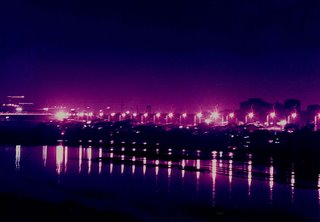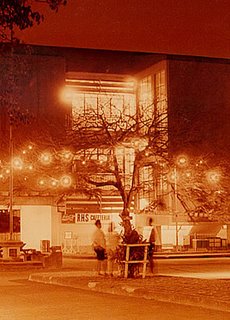| Update as of September 18, 2023:
If you’re a high school or grade school student in the Philippines who’s joining the photojournalism contest in the division, regional, or national press conference, I’m offering two free resources to you : A. 900-plus interactive exercises on English grammar, vocabulary, reading comprehension, verbal analogy, etc (with around 200 megabytes total file size). The exercises have time limit and automatic scoring, with an average of 10 items per exercise. Examples of these interactive exercises are: Common English grammar errors: Exercise 01 (nouns - confusions of number); Phrasal Verbs: Expressions with Go; English Placement Test (45 items). B. 200-plus resources (JPG, PDF, MP4, etc.) on photography and photojournalism, with 600-plus megabytes total file size. For some examples of these resources, surf to the “Free photography e-books, cheat sheets” page. For the download links and more information about how to use the interactive exercises, please surf to my “Better English resources and exercises” blog. Please inform your journalism teacher/schoolpaper adviser or your parents about these resources before downloading them. If you have any question about downloading or using these free resources, please email me (after informing your journalism teacher/schoolpaper adviser or your parents). I’ll be able to reply to you within two to three days; if you don’t see my reply in your Inbox, check your Spam folder. Or, you can text me. Also, if you win in the photojournalism contest at whatever level (district, division, regional, or national), you can send me your prizewinning pictures, and I will feature them in a blog post. Atty. Gerry T. Galacio gtgalacio@yahoo.com 0927-798-3138 |
“Hit or miss, trial and error, better luck next time, try and try again, next time make sure you’ve got film on your camera before you shoot, okay?”
These expressions best describe the emotions, the frustrations, the experiences you’ll have as you start to learn about photography. Some experiences you’d rather forget, some missed shots you’ll regret forever but just like life, photography is one activity where learning means building up through your experiences, growing by stages ... As rock star Alanis Morissette said in a hit song many years ago, “You live, you learn!”
Select your shots
One stage that you’ll go through as the photography bug hits you, is indiscriminate shooting. If you see something, you shoot it. If it’s out there, you shoot it. If something moves, you shoot it. You buy some more film, you shoot again ... As your skills improve however, you’ll become more selective in your shots. Your standards will become higher, and you’ll also realize that you don’t have enough money to buy all the film you need or want! (The high cost of film and processing, and the immediate results are some of the reasons why digital photography is such a big hit these days.)
Example of sequence shots
Remember our discussion of types of pictures and sequence shots? A sequence, as the term denotes, is a series of pictures of one subject, shot one after another. A photo sequence may or may not illustrate a certain idea or theme, but the series of pictures provides the viewers with more visual information about your subject. (Later on, you will learn that you can create a photo essay out of sequence shots.)
A. “Thoughts on graduation day” (photo essay using sequence shots with captions)
In the following pictures, I asked my Class 1990 yearbook staffer Eric to pose by the dike at the back of Rizal High School in Pasig (formerly credited in the Guinness Book of World Records as the world’s biggest high school). I was on the 3rd floor of a building with my beloved Canon AE-1 Program camera fitted with a Vivitar Series 1 70-210 mm zoom lens.
I wanted to express the contemplative mood and loneliness a senior normally goes through as graduation time comes near. I just wanted two elements in my picture - Eric and the still waters of the Marikina River flowing behind the Rizal High School campus in Pasig City. The first two pictures of the scene below were the ones I needed to express what I wanted.
But then, I saw the tugboat coming from the left. I switched on the power winder of my camera. I shot about 20 frames all in all as the tugboat passed Eric and created ripples on the water. Serendipity! I had a photo essay that could be used to illustrate life cycles, transient moments, peace and serenity, consequences and change!
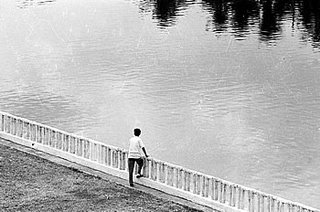 |
| We have spent four memorable years here in our beloved school, and the days leading to our graduation day have seen a thousand questions tumbling in our hearts and minds. Where do we go from here? |
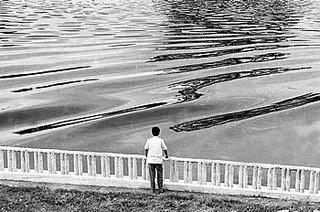 |
| The saddest truth in the whole universe is that time changes everything. |
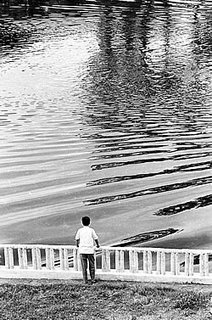 |
| But our friends have made a promise always to remember … |
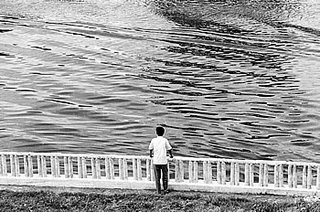 |
| Slowly, the half-forgotten lyrics become clearer and they bring us back to our high school days … |
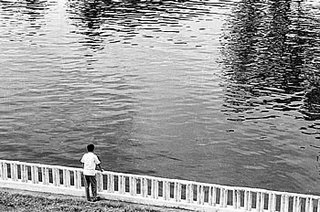 |
| Indeed, we have promised always to t remember. We can always remember. We must always remember … |
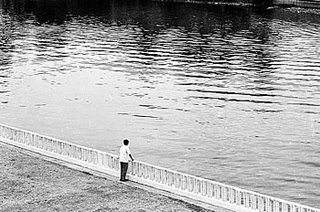 Pssst, Eric! It has been eighteen years since 1990 when I asked you to pose by the dike. You can move away from the dike now, and go on with your life, okay?
Pssst, Eric! It has been eighteen years since 1990 when I asked you to pose by the dike. You can move away from the dike now, and go on with your life, okay? B. The pictures below are sequence shots of a senior class having their yearbook picture taken.
I shot these pictures way back in 1991 with my beloved Canon AE-1 Program camera fitted with an FD f/1.8 50 mm lens, a yellow-green filter, and a power winder. After I shot the formal class picture, the fun began. If you mouse over each picture, the caption will appear for a few seconds.
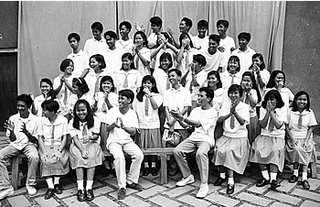
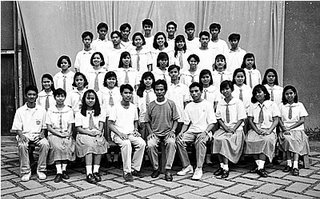
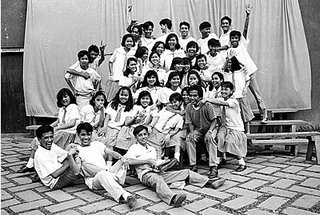
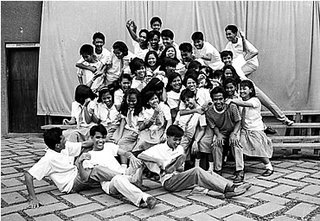
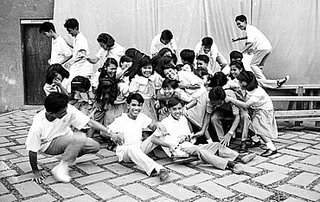
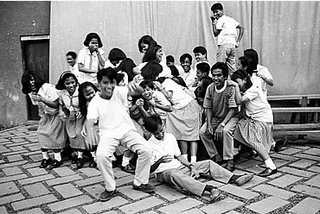
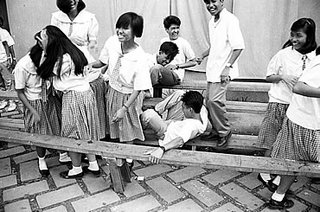

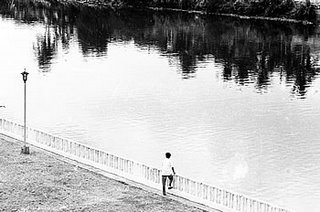
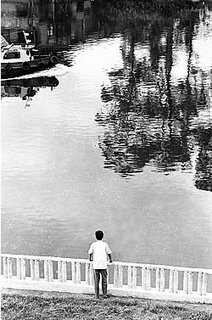
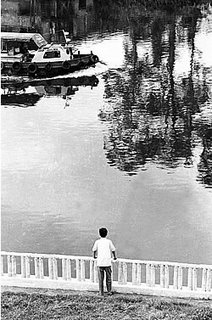
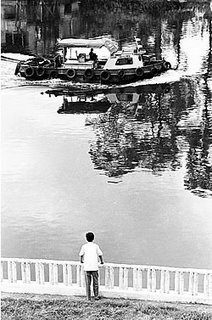
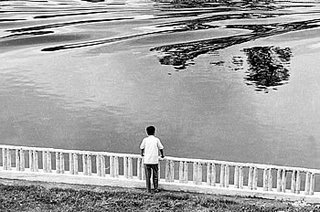
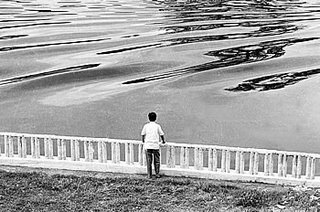
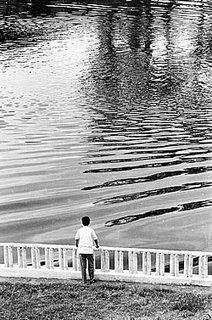
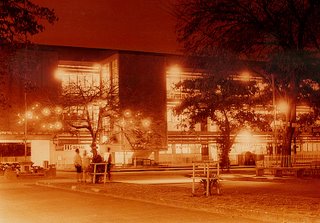
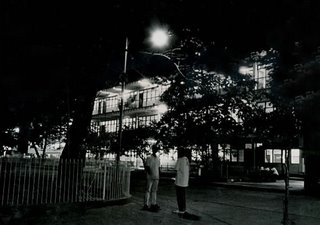 Look at the picture above. These aren’t ghosts; they’re my staffers whom I asked to pose underneath the lamp post. I used f/5.6 as lens opening and 30 seconds as shutter speed. Somebody walked by, between my staffers and my camera which was set on a tripod. But where is he in the picture? No matter how and where you look, you won’t find that guy. Why? He did not stay in one place long enough to be recorded in my film.
Look at the picture above. These aren’t ghosts; they’re my staffers whom I asked to pose underneath the lamp post. I used f/5.6 as lens opening and 30 seconds as shutter speed. Somebody walked by, between my staffers and my camera which was set on a tripod. But where is he in the picture? No matter how and where you look, you won’t find that guy. Why? He did not stay in one place long enough to be recorded in my film.